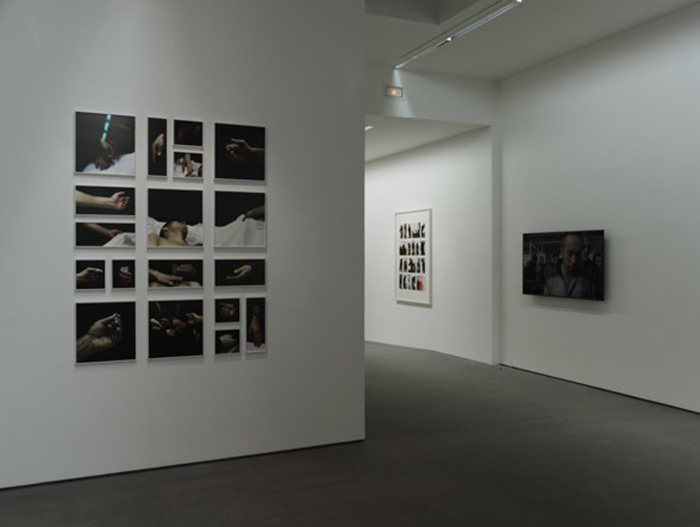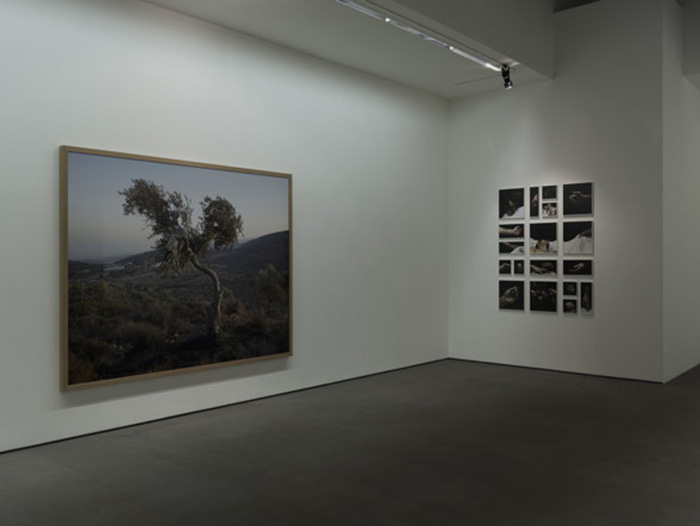PHOTO:Luc Delahaye-Sūmud et Autres Histoires
 Luc Delahaye is a French photographer known for his large-scale color works depicting conflicts, world events or social issues. His pictures are characterized by detachment, directness and rich details, a documentary approach which is however countered by dramatic intensity and a narrative structure. While exploring the boundaries between reality and the imaginary, his works constitute documents of immediate history, and urge reflection “upon the relationships among art, history and information”.
Luc Delahaye is a French photographer known for his large-scale color works depicting conflicts, world events or social issues. His pictures are characterized by detachment, directness and rich details, a documentary approach which is however countered by dramatic intensity and a narrative structure. While exploring the boundaries between reality and the imaginary, his works constitute documents of immediate history, and urge reflection “upon the relationships among art, history and information”.
By Dimitris Lempesis
Photo Galerie Nathalie Obadia
In his solo exhibition “Sūmud et autres histoires”, Luc Delahaye’s solo exhibition, the artist presents seven photographs and one video made in Palestine between October 2015 and March 2017. Luc Delahaye trains his camera on unexpected or unfamiliar aspects of current events from Iraq to Vienna to Chad. Unlike the ceaseless, sensationalist flow of mass media images, Delahaye’s photographs of war, natural catastrophes, or political upheaval, evade straightforward interpretation or resolution. In the large format photographs the outside reality of Palestinian life only appears indirectly. What they capture is, rather, a feeling. Two young men seat in silence under a tree. In a shared taxi, a woman holds her child on her knees. Five thousands workers go through a checkpoint and start their day. A set of hands during a shahid funeral ritual. A child tries to make his donkey step back. Shadows and silhouettes reenact the primitive fight. Two kids are perched on an olive tree. Minuscule figurines evolve in a landscape stratified by history. These scenes from Palestine were shot with a cellphone or a view camera made for the occasion. They explore the questions: How is it to be young in Palestine today? How to find one’s place in a country that only exists through memory and in the common consciousness of a duty? The responsibility to carry on with the resistance is a shared heritage and goes against the desire to make a life for oneself. It is not easy to live according to the sūmud. Sūmud means: being there, to hold up in those dire circumstances and daily humiliations, to assert one’s identity and presence. The sūmud is, at the core of the Palestinian national consciousness, a resistance strategy to the occupation as well as a concrete philosophy. It is an attitude. It relates to suffering, but not as an end: freedom and justice are its horizon. And it is a discipline: the sāmid fuels the fire of his inner rage without showing any sign of it. Delahaye began his career as a photojournalist. Specializing in war photography, he covered conflicts in Bosnia, Lebanon, Afghanistan, Rwanda, and Chechnya. A member of the prestigious Magnum Photos agency from 1994 to 2004, Delahaye worked independently or was commissioned by Western news magazines, especially Newsweek. But in the early 1990s, inspired in part by documentary photographer Walker Evans, Delahaye began working on more personal and extended serial projects. He realized several documentary portrait series in France, and in the winter of 1998 travelled to Russia to photograph the social consequences of the country’s economic crisis. These color works depicting the struggles of the Russian people were published as a book in 2000. In 2001, Delahaye began creating large-scale color photographs of current events. Spanning the globe, Delahaye has photographed a Taliban casualty in Afghanistan, Slobodan Milosevic on trial in The Hague, and central Baghdad shortly after the US invasion. He has also captured gatherings of well-known but often unseen institutions including the World Economic Forum, UN Security Council, and OPEC. A first selection of these color images was published as “History” in 2003. In 2005 he won the eutsche Börse Photography Prize and in 2012 the Prix Pictet.
Info: Galerie Nathalie Obadia, 18 rue du Bourg-Tibourg, Paris, Duration 7/2-31/3/18, Days & Hours: Tue-Sat 11:00-19:00, www.nathalieobadia.com





